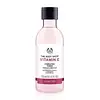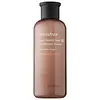What's inside
What's inside
 Key Ingredients
Key Ingredients

 Benefits
Benefits

 Concerns
Concerns

 Ingredients Side-by-side
Ingredients Side-by-side

Water
Skin ConditioningGlycerin
HumectantPPG-26-Buteth-26
Skin ConditioningPEG-40 Hydrogenated Castor Oil
EmulsifyingPhenoxyethanol
PreservativePolysorbate 20
EmulsifyingDiglycerin
HumectantTocopheryl Acetate
AntioxidantPotassium Sorbate
PreservativeCarbomer
Emulsion StabilisingXanthan Gum
EmulsifyingDisodium EDTA
Triticum Vulgare Germ Oil
EmollientParfum
MaskingBenzyl Benzoate
AntimicrobialSodium Hydroxide
BufferingCitric Acid
BufferingHydroxycitronellal
PerfumingLimonene
PerfumingGeraniol
PerfumingLinalool
PerfumingCitronellol
PerfumingCinnamyl Alcohol
PerfumingWater, Glycerin, PPG-26-Buteth-26, PEG-40 Hydrogenated Castor Oil, Phenoxyethanol, Polysorbate 20, Diglycerin, Tocopheryl Acetate, Potassium Sorbate, Carbomer, Xanthan Gum, Disodium EDTA, Triticum Vulgare Germ Oil, Parfum, Benzyl Benzoate, Sodium Hydroxide, Citric Acid, Hydroxycitronellal, Limonene, Geraniol, Linalool, Citronellol, Cinnamyl Alcohol
Water
Skin ConditioningPropanediol
SolventAlcohol
Antimicrobial1,2-Hexanediol
Skin ConditioningSilica
AbrasivePPG-13-Decyltetradeceth-24
EmulsifyingLithium Magnesium Sodium Silicate
AbsorbentSodium Citrate
BufferingCitric Acid
BufferingGlyceryl Caprylate
EmollientParfum
MaskingCalcium Chloride
AstringentEthylhexylglycerin
Skin ConditioningDisodium EDTA
Colloidal Sulfur
AntimicrobialVolcanic Ash
AbrasiveCI 77891
Cosmetic ColorantLactic Acid/Glycolic Acid Copolymer
Skin ConditioningAluminum Hydroxide
EmollientTriethoxycaprylylsilane
Tocopherol
AntioxidantWater, Propanediol, Alcohol, 1,2-Hexanediol, Silica, PPG-13-Decyltetradeceth-24, Lithium Magnesium Sodium Silicate, Sodium Citrate, Citric Acid, Glyceryl Caprylate, Parfum, Calcium Chloride, Ethylhexylglycerin, Disodium EDTA, Colloidal Sulfur, Volcanic Ash, CI 77891, Lactic Acid/Glycolic Acid Copolymer, Aluminum Hydroxide, Triethoxycaprylylsilane, Tocopherol
 Reviews
Reviews

Ingredients Explained
These ingredients are found in both products.
Ingredients higher up in an ingredient list are typically present in a larger amount.
Citric Acid is an alpha hydroxy acid (AHA) naturally found in citrus fruits like oranges, lemons, and limes.
Like other AHAs, citric acid can exfoliate skin by breaking down the bonds that hold dead skin cells together. This helps reveal smoother and brighter skin underneath.
However, this exfoliating effect only happens at high concentrations (20%) which can be hard to find in cosmetic products.
Due to this, citric acid is usually included in small amounts as a pH adjuster. This helps keep products slightly more acidic and compatible with skin's natural pH.
In skincare formulas, citric acid can:
While it can provide some skin benefits, research shows lactic acid and glycolic acid are generally more effective and less irritating exfoliants.
Most citric acid used in skincare today is made by fermenting sugars (usually from molasses). This synthetic version is identical to the natural citrus form but easier to stabilize and use in formulations.
Read more about some other popular AHA's here:
Learn more about Citric AcidDisodium EDTA plays a role in making products more stable by aiding other preservatives.
It is a chelating agent, meaning it neutralizes metal ions that may be found in a product.
Disodium EDTA is a salt of edetic acid and is found to be safe in cosmetic ingredients.
Learn more about Disodium EDTAParfum is a catch-all term for an ingredient or more that is used to give a scent to products.
Also called "fragrance", this ingredient can be a blend of hundreds of chemicals or plant oils. This means every product with "fragrance" or "parfum" in the ingredients list is a different mixture.
For instance, Habanolide is a proprietary trade name for a specific aroma chemical. When used as a fragrance ingredient in cosmetics, most aroma chemicals fall under the broad labeling category of “FRAGRANCE” or “PARFUM” according to EU and US regulations.
The term 'parfum' or 'fragrance' is not regulated in many countries. In many cases, it is up to the brand to define this term.
For instance, many brands choose to label themselves as "fragrance-free" because they are not using synthetic fragrances. However, their products may still contain ingredients such as essential oils that are considered a fragrance by INCI standards.
One example is Calendula flower extract. Calendula is an essential oil that still imparts a scent or 'fragrance'.
Depending on the blend, the ingredients in the mixture can cause allergies and sensitivities on the skin. Some ingredients that are known EU allergens include linalool and citronellol.
Parfum can also be used to mask or cover an unpleasant scent.
The bottom line is: not all fragrances/parfum/ingredients are created equally. If you are worried about fragrances, we recommend taking a closer look at an ingredient. And of course, we always recommend speaking with a professional.
Learn more about ParfumWater. It's the most common cosmetic ingredient of all. You'll usually see it at the top of ingredient lists, meaning that it makes up the largest part of the product.
So why is it so popular? Water most often acts as a solvent - this means that it helps dissolve other ingredients into the formulation.
You'll also recognize water as that liquid we all need to stay alive. If you see this, drink a glass of water. Stay hydrated!
Learn more about Water